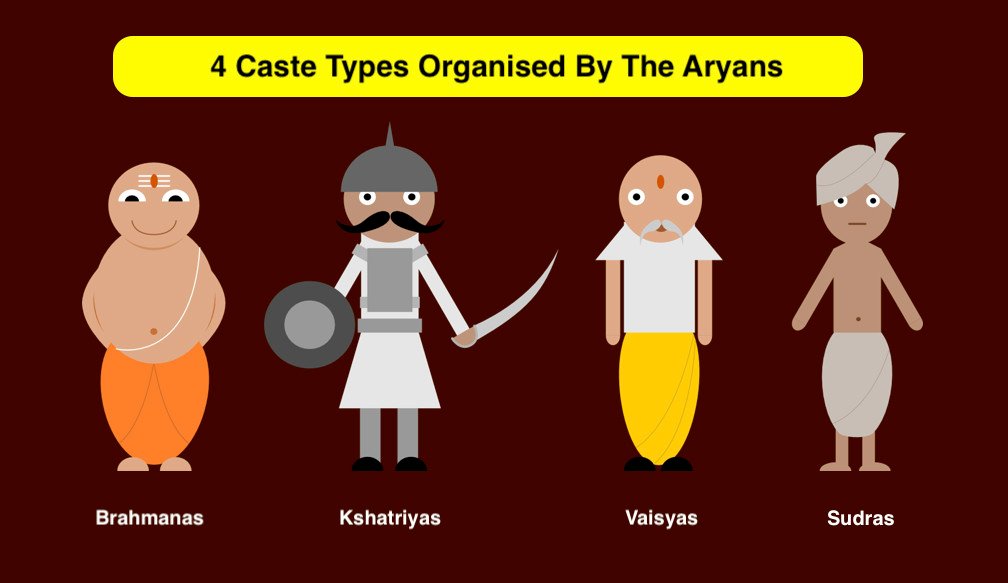History and Origin of Caste System in India
Origin of Caste System in India
Many hypotheses are circling the origin of the caste system in India. The religious theory claims that the castes were created from the body of the Brahma, the creator God. Brahmanas from his naval; Kshatriyas from his hands; the Vaishyas from his thighs and the Sudras from his feet.
Early written evidence suggests that the caste system appears in the sacred Hindu scriptures the Vedas, from as early as 1500 BCE. However, the “Rigveda, which dates from around 1700–1100 BCE, rarely mentions caste distinctions.
Theology Behind the Castes:
Reincarnation, which is widely believed topic by many cultures, is the process of the soul taking rebirth into a new material form after each life; it is one of the central tenets of the Hindu cosmology. According to Hindu religion, souls can move not only among different levels of human society but can also move into lower forms of life-based on their karma. In this system, virtuousness is taken upon strictly as it has its rewards in the afterlife. For example, a virtuous person from lower caste as Shudras could be reborn as a Brahmin in his or her next life.
History of the Caste System in India:

On the contrary, the socio-historical theory says, the origin of caste system finds its source in the arrival of Aryans in India around 1500 BC. Under which people associated with Hinduism, were categorised by their occupations.
The Aryans disregarded the local cultures and began their conquest by taking control over regions in north India and at the same time expanding their boundaries towards the jungles and mountains in northern India.
The Aryans then organised themselves in three groups. The first group were warriors known by the name Kshatriyas, and the second group were priests known by the name Brahmanas. Both of these groups struggled for political power among the Aryans, in which the Brahmanas emerged victoriously. The farmers and artisans belonged to the third group were known by the name Vaisyas.
The Aryans after conquering and taking control over north India subdued the locals and made them their servants. Between the outcasts and the three Aryan castes, there is the Sudra caste who were the simple workers of the society.
History of the caste system during the classical period:
The caste system was not complete during much of Indian history. For example, the renowned Gupta Dynasty, which was in power from 320 to 550, was from the Vaishya caste. Many rulers of the later part of history were also from other castes—for example, the Madurai Nayaks, Balijas (traders) that ruled from 1559 to 1739.
The British Raj and Caste:
When the East India Company began colonising India in 1757, they exploited the caste system of India to establish social control. The British slowly associated themselves with Brahmins, by favouring them to restore some of their lost privileges repealed by the Muslim rulers.
However, the British had discriminatory perspective towards many Indian customs concerning the lower castes, so these were outlawed, and laws were introduced by the British to protect the “Scheduled Castes,” untouchables and low-caste people.
Caste Relations in Independent India:
After gaining independence on August 15, 1947, India’s newly formed government instituted laws to safeguard the rights of “Scheduled castes” and tribes, which included both the untouchables and traditional groups.
We’ve created this content for informational purposes only, and it reflects the views of its respective authors/entities (freelancers/interns) and not those of Winspire Magazine. Winspire Magazine does not endorse or vouch for the accuracy of the information provided in this content. It is the reader’s responsibility to verify and ensure the information is correct and up-to-date. Winspire Magazine disclaims any liability or responsibility for any damages or losses from using this content. Therefore, readers should take all necessary steps to verify the accuracy and reliability of any information presented in this content.


